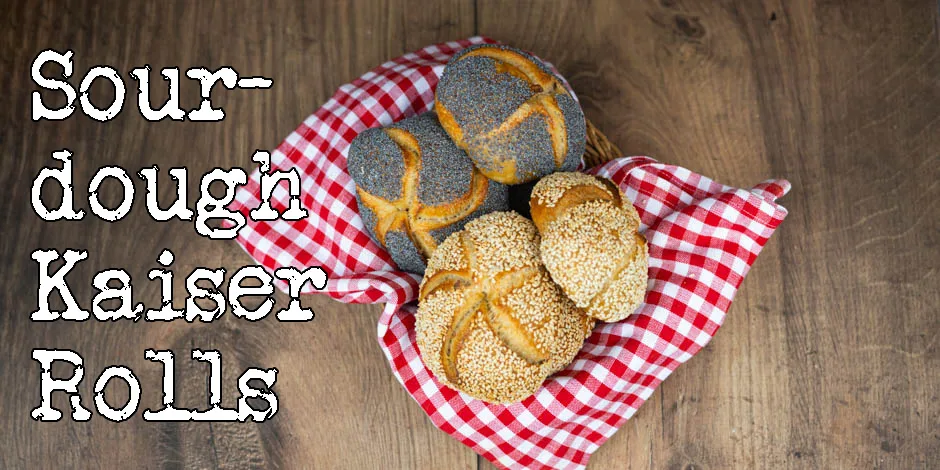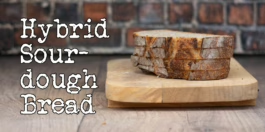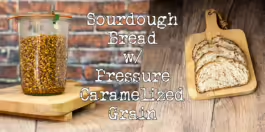You’re in the mood for a sandwich, but white bread is just so… white. You could make a sandwich on whole-grain bread, but that’s where your mood is. It needs to have a good crunch and a wonderfully soft crumb, but it also needs to have a great taste. But aren’t those opposed things to want? Nope. This is my sourdough kaiser roll recipe.
Kaiser rolls are the best of both worlds, white bread but crunchy. Adding sourdough into the mix, you can get some excellent taste out of that white flour, especially paired with a long retard. That is precisely what this recipe brings you.
While not an official opinion, I feel like kaiser rolls are a cousin of the bagel. Taste-wise they are pretty similar, especially because of the added barley malt syrup, but the texture is quite different.
If you are just here for the recipe, you can press the button underneath to be automagically transported to the recipe:
Jump to Recipe Jump to Video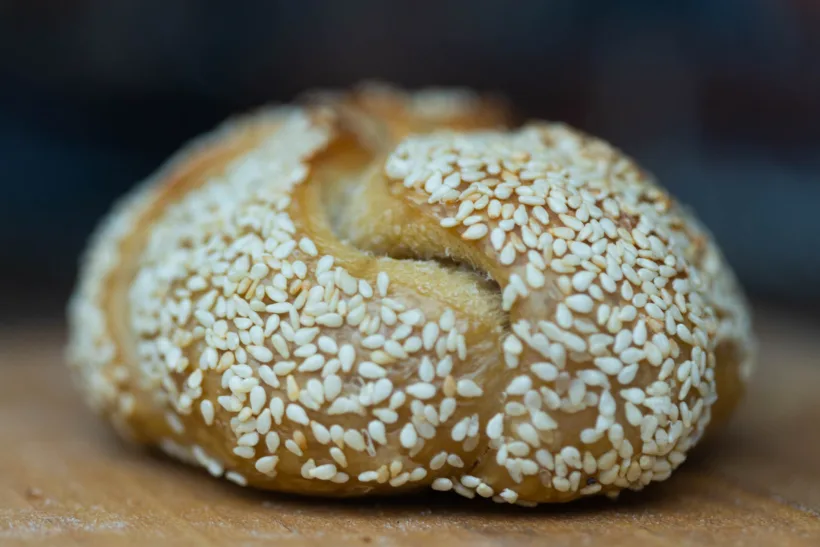
The history of Kaiser rolls
The Kaiser rolls have been made in Austria since the 18th century. They are common in most countries that border Austria but mostly in German-speaking countries.
One of the first visual proofs of the Kaiser roll is in the painting by the court painter Martin van Meytens of the court banquet of Maria Theresa in 1760.

In general, a roll is called a semmel in Austria, but the Kaisersemmel is meant to have been named for Emperor Franz Joseph I.
As is often the case with food that’s existed for centuries, it’s called many different things: in Austria and the Southern state of Bavaria, it’s known as Kaisersemmel. In the South Eastern part of Germany, Baden-Württemberg, it’s known as weck, whereas in the rest of Germany, it’s known as brötchen (literally little bread).
The dough in this sourdough kaiser rolls recipe
Vitals
| Total weight | 1335 grams |
| Pre-fermented flour | 13% |
| Hydration | 50.3% |
| Yield | 8 rolls |
Dough
I’ve constructed the dough with 100% bread flour, leavened with 30% sourdough starter for a bit of a faster fermentation, and 2% salt.
The dough is enriched with eggs, sugar, and oil, and some water is added to get the dough to a workable consistency.
You can substitute the bread flour for all-purpose flour. The crumb will be more tender but may not be as crispy.
| Weight | Ingredient | Baker's Percentage |
|---|---|---|
| 700g | bread flour | 100% |
| 30g | sugar | 4.3% |
| 15g | salt | 2.1% |
| 30g | barley malt extract | 4.3% |
| 25g | neutral oil | 3.6% |
| 100g | eggs, whole | 14.3% |
| 210g | starter (100% hydration) | 30% |
| 225g | water | 32.1% |
If you want to play around with the formula: change hydration, quantity, inoculation, or anything else, you can use my Bread Calculator.
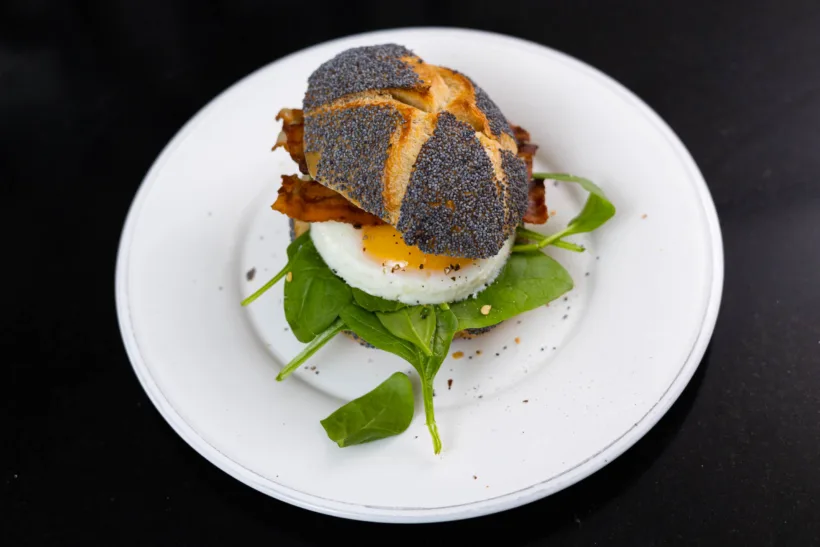
I can’t get barley malt syrup. What can I substitute with?
You can create a good taste substitute if you cannot get barley malt syrup.
Combine 125g/1 cup of dark ale and 125g/1 scant cup of dark brown sugar in a pot. Bring it to a boil, and then let it simmer uncovered until you have a very thick syrup. This can be used in place of barley malt syrup.
Stored in the fridge, it stays good indefinitely.
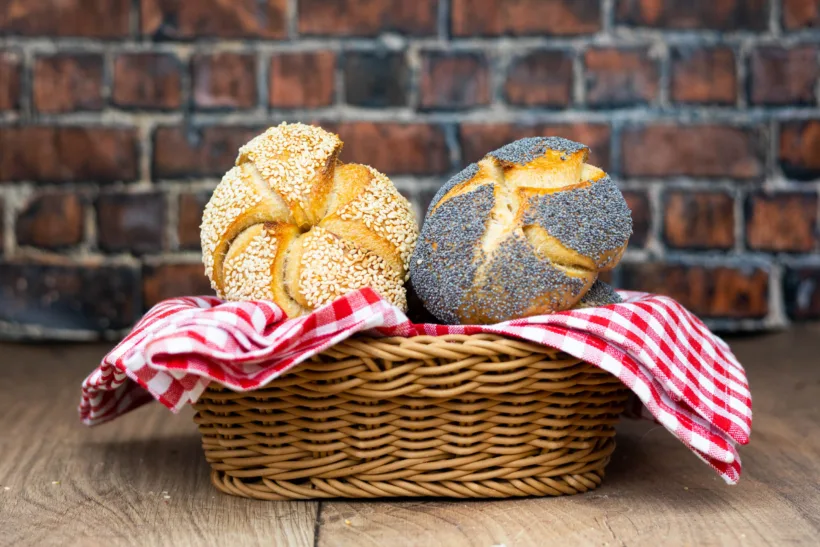
The conclusion on this sourdough kaiser rolls recipe
While these rolls are baking, an absolutely irresistible smell permeates the kitchen. Once you take them out, the wonderful smell intensifies, and gets almost impossible to resist eating them all then and there.
You pick up a roll, and it almost shatters between your hands from being so crispy. You break it open, and the soft crumb appears. Oh, so soft.
These rolls are wonderful. Perfect, fully fermented taste. Large enough to make a sandwich but not gigantic. I guess if you’re really hungry, you can eat two.
Make them. Your lunch guests will thank you.

Please share this recipe for sourdough kaiser rolls on social media
This is my recipe for sourdough kaiser rolls. If you like this recipe, please share it with like-minded roll lovers on social media.
If you make it and post it on Instagram, please tag me as @foodgeek.dk so I can see it. That would make me very happy.
Ad links! The links for equipment and ingredients in this recipe are affiliate links, which means I will receive a commission if you purchase the product.

Sourdough Kaiser Rolls
Ingredients
Dough
- 700 g bread flour
- 30 g sugar
- 15 g salt
- 30 g barley malt syrup
- 25 g neutral oil like canola, peanut, rapeseed, grapeseed
- 100 g eggs about 2 large eggs
- 210 g starter fed and grown to its peak
- 225 g water
Toppings
- seeds of your choice
Instructions
Mix the dough
- To a medium bowl, add: bread flour, sugar and salt. Mix it, so everything is distributed evenly.
- Then add barley malt syrup, oil, eggs, sourdough starter, and water. Mix until you can’t mix anymore.
- Then knead the dough until you’ve kneaded all the flour into it.
Bulk Fermentation
- Put the dough in a bulking container. Level the dough, and mark on the container where the top is and where it will have grown 50%.
- Then put the dough somewhere warm. I put it in my proofer set to 30°C/86°F. It took about 4 hours for me, but you should leave it until it’s grown.
Divide and pre-shape
- Divide the dough into eight equally sized pieces. About 160 grams each.
- Pre-shape each bun by pulling the sides towards the middle to create tension on the part facing downwards.
- When it’s taut, place the dough on your unfloured counter and move your hand in circles to create a round ball. Your palm should be touching the top of the ball.
- Then let them rest for 20 minutes under a dishcloth. After 20 minutes, it’s time to final shape.
Final shaping
- Grab a sheet that can fit in your refrigerator and line it with parchment paper.
- Take a ball, and squish it flat. Then roll it out to about 40 cm/15 inches.
- Then tie a knot. Fold the piece that’s above the knot down underneath, and fold the piece underneath the knot, up and over, and into the middle.
- Lastly, make sure it’s round by twisting it between your pinkies (watch the video, trust me!)
- Put it underneath a dishtowel and proceed with the rest of the pieces.
- Once they are all shaped, cover them with cling film, and let them proof at room temperature for 2 hours. Room temperature is around 20°C/68°F.
- After the final proof, make sure they’re covered well.
- Then put them in the fridge until you want to bake. The longer they stay there, the more the taste develops. Your fridge should be at or below 4°C/39°F.
Baking the rolls
- Once ready to bake, heat your oven to 220°C/425°F with a pan for steaming at the bottom.
- Grab the pan of rolls from the fridge. Boil a kettle of water.
- Loosen the rolls from the parchment paper, and spray them with water. Dip each roll in your favorite seeds.
- Put the rolls in the oven, and pour boiling water into the pan.
- Close the oven, and bake for 15 minutes.
- Then take out the steaming pan, and bake for 10 minutes more.
- Make sure they are super crispy. If not, bake a bit more and check again.
- Then take them out, and let them cool on a wire rack.



